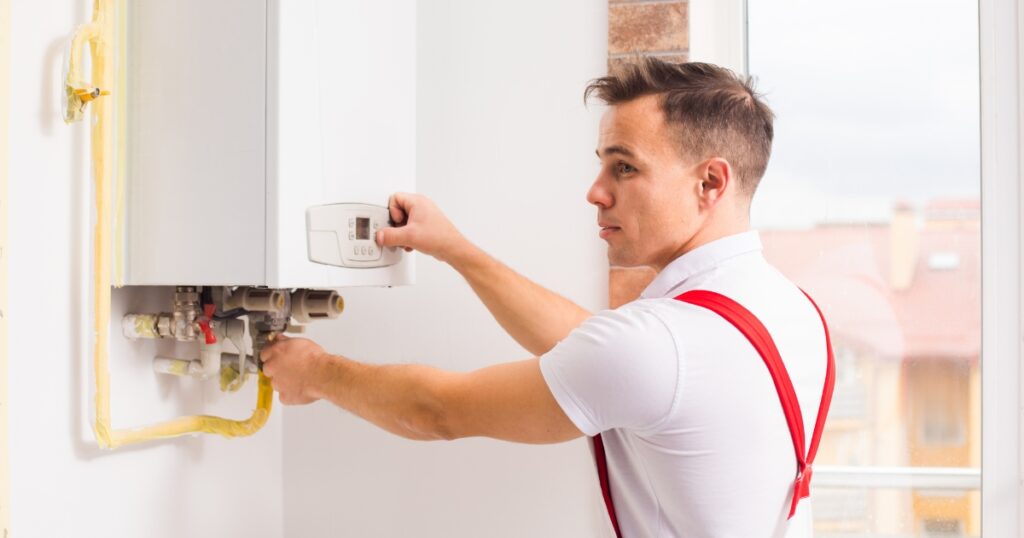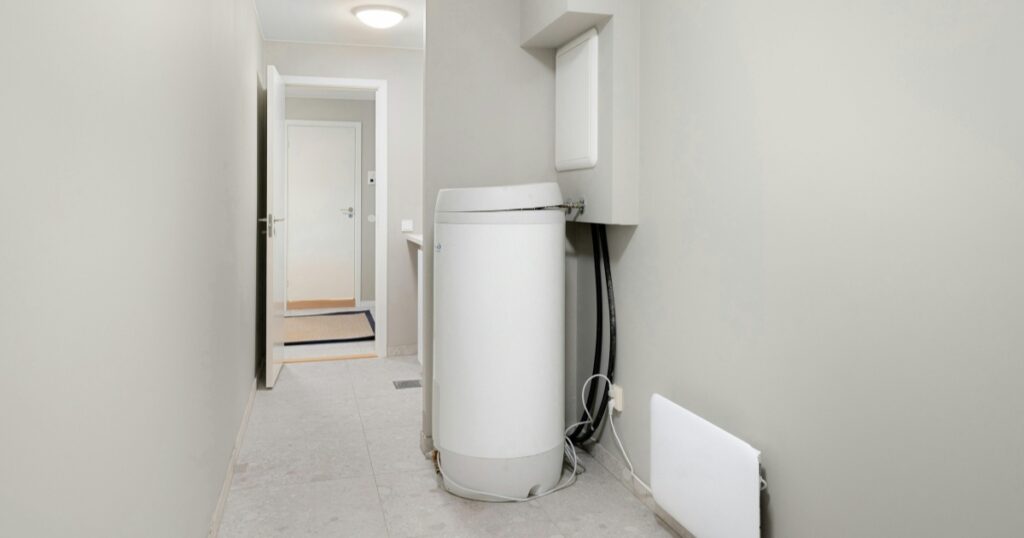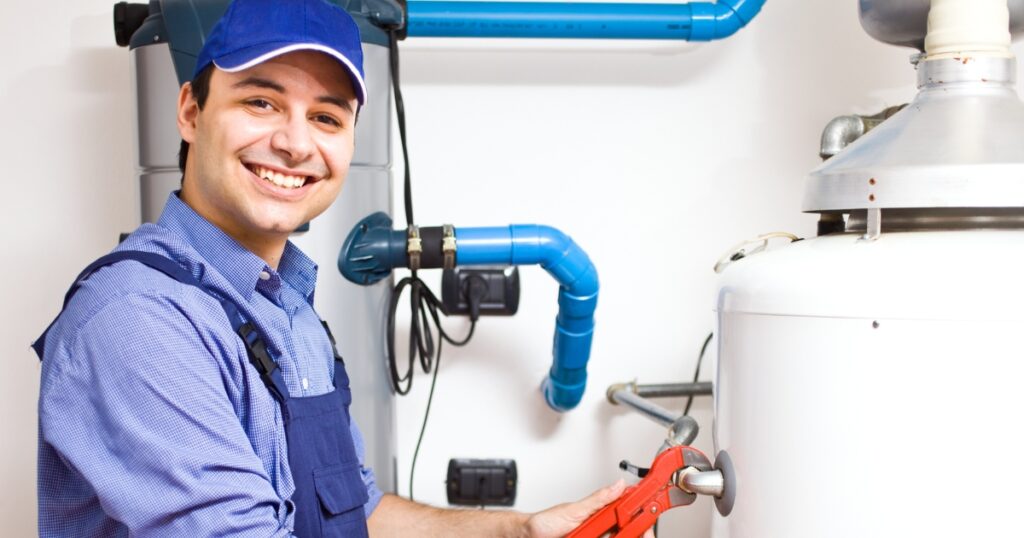Uncovering that your hot water system is playing up because of a dodgy pressure relief valve can be a real pain. We know the feeling, having gone through the wringer ourselves, and upon taking a closer look, we’ve learned just how critical these valves are in keeping things from going pear-shaped due to dangerous pressure buildups.
Our piece is chockers with insights on whether you’re better off fixing or flicking these valves, so you can get your hot water system back in tip-top shape. Time to sort out that leak!
Key Takeaways
- Checking your hot water system’s pressure relief valve regularly helps spot early signs of wear and tear. This routine can save you from future headaches by identifying leaks or drips that indicate the valve might be failing to properly release excess pressure.
- If your hot water service is showing continual water flow or heavy discharges until the water cools, it suggests a malfunction in the pressure relief valve. Consulting with a licensed plumber for an accurate diagnosis and timely repair or replacement is crucial to prevent further damage and ensure safety.
- Causes of faulty pressure relief valves include defective parts, installation errors, high system pressure, or simply age and wear. Knowing these causes can guide you in maintaining your hot water system effectively and deciding when it may be time to seek professional assistance for repairs or replacements.
- Before tackling a repair or replacement, always turn off your water heater and let it cool down. Remember to safely unscrew and remove the old valve before installing a new one, ensuring all connections are secure to prevent leaks.
- Regular maintenance checks by professional plumbers not only ensure that any potential issues with your hot water system’s pressure relief valves are caught early on but also keep your home safe from hazards associated with excessive temperature or pressure buildups.
How Does a Pressure Relief Valve Work in a Hot Water System?
A pressure relief valve in a hot water system releases excess pressure caused by heating the water without circulating it. It prevents potentially dangerous overheating and maintains safe pressure levels within the tank.
Purpose of the valve
The valve in your hot water system plays a critical role in ensuring safety and preventing damage. It acts as a guard, releasing excess pressure or steam if the temperature climbs too high.

This helps to avoid potential accidents, like explosions, keeping your home safe.
Over time, though, even the best valves can start to wear out or malfunction. That’s why it’s crucial to check them regularly and consider replacing these vital components every 3 to 5 years.
By doing so, you maintain the proper functioning of your hot water system and ensure you’re not caught off guard by sudden leaks or failures. We always recommend getting a licensed plumber for valve replacement or repair; they have the right tools and knowledge to tackle any issues with precision.
How it prevent overheating and high-pressure
The purpose of the valve in a hot water system is to release excess pressure and prevent overheating. This prevents potential damage to the system, ensuring safety by releasing built-up pressure if it exceeds safe levels.
High pressure can be hazardous and lead to malfunctions in the water heater, potentially causing leaks or even ruptures. The relief valve plays a crucial role in maintaining the proper functioning of the hot water system by preventing these dangerous situations from occurring.
By relieving high pressure, the valve also safeguards against overheating, which can impede the efficiency and lifespan of the water heater. Overheating may cause components to deteriorate prematurely and increase energy consumption.
Common Issues with Pressure Relief Valves with Hot Water Service
Pressure relief valves can develop issues such as leaking or dripping, which may indicate a faulty valve. Continual water flow or heavy flows, until the water cools, are also common problems experienced with these valves.
Leaking or dripping
If you notice your hot water service pressure relief valve is leaking or dripping, it may indicate an issue with excessive pressure in the system. This could be a sign that the valve is failing to release excess pressure properly, which warrants immediate attention to prevent potential safety hazards.
Regularly checking for leaks or dripping from the relief valve can help identify any issues early on and avoid potential damage to your hot water system.
Periodically inspecting your hot water service pressure relief valve can save you from costly repairs down the line. If you observe any signs of leakage or dripping, it’s advisable to seek professional help from licensed plumbers who have the expertise and tools to diagnose and legally repair faulty valves in hot water systems.
Continual water flow
If your hot water system’s pressure relief valve is experiencing continual water flow, it could be a sign of a malfunction. This constant discharge may indicate that the valve is not effectively controlling the pressure within the system, which can compromise its safety and efficiency.
It’s crucial to address this issue promptly to prevent potential damage to the water heater and ensure the proper functioning of the entire hot water system.
Continual water flow from the pressure relief valve can also lead to significant wastage of both water and energy. Additionally, excessive water discharge can pose safety risks and result in increased utility bills.
Heavy flows until the water cools
If your hot water system experiences heavy flows until the water cools, it could be a sign of a faulty pressure relief valve. This issue might occur due to excessive pressure or overheating within the system.
Heavy flows can indicate that the valve is not functioning properly and is releasing an excessive amount of water, which could lead to potential safety hazards and damage to the hot water system.
To address this problem, it’s important to have a licensed plumber inspect and repair or replace the faulty pressure relief valve. Ignoring heavy flows from the relief valve can lead to further damage and inefficiency in your hot water system.

Causes of Faulty Pressure Relief Valves
Faulty pressure relief valves can be caused by a defective valve, installation issues, high water pressure, or age and wear. These factors can lead to leaks, improper functioning, or complete failure of the valve.
Defective valve
If you notice a faulty hot water service pressure relief valve, it may be due to a defective valve. Over time, these valves can deteriorate or suffer from manufacturing defects, leading to issues like leaking or failure to open properly.
It is essential to address this problem promptly as a malfunctioning pressure relief valve can lead to safety hazards and potential damage to the hot water system. Licensed plumbers have the expertise and tools required to diagnose and replace defective valves in hot water systems, ensuring that your home remains safe and your hot water system functions effectively.
Installation issues
Faulty hot water service pressure relief valves can be attributed to installation issues. Improperly installed valves or incorrect fittings can lead to malfunctioning in the hot water system’s pressure relief valve.
High water pressure, an outdated or faulty system, and defective installations may cause the pressure relief valve to fail, posing a safety risk for your home. It is crucial to consult licensed plumbers who possess the expertise and knowledge required for diagnosing and resolving these installation-related problems efficiently.
If left unaddressed, installation issues with hot water service pressure relief valves could lead to potentially hazardous situations such as overheating and excessive pressure within the system.
High water pressure
High water pressure can cause stress on the pressure relief valve in your hot water system, leading to potential leaks or malfunctions. Excessive pressure may result from system overpressurization, closed thermal expansion valves, or a faulty temperature and pressure relief valve.
High water pressure can also accelerate wear and tear on the valve components, making it crucial to regularly monitor your system’s water pressure using a pressure gauge attachment.
Additionally, it is important to address high water pressure promptly as it increases the risk of damage to not only the relief valve but also other components of your hot water service.
Age and wear
Faulty hot water service pressure relief valves may suffer from wear and tear over time, especially if the system is older. As per industry recommendations, it’s advisable to consider replacing pressure relief valves every 3 to 5 years, even if they seem functional, as they can deteriorate with age.
Age-related degradation could compromise the proper functioning of the valve and potentially lead to safety hazards for your hot water system.
To determine whether a pressure relief valve needs repair or replacement due to age and wear, take note of how long it has been in use and be attentive to any signs of malfunction.
Licensed plumbers have the expertise needed to evaluate the lifespan of hot water service components accurately, providing valuable guidance on when replacements are necessary. Regular maintenance will help ensure that your hot water system operates efficiently and safely.
How to Determine if a Pressure Relief Valve Needs Repair or Replacement
To check if a pressure relief valve needs repair or replacement, inspect for any leaks or visible signs of damage. Additionally, evaluate the water pressure and factor in the age of the hot water system to make an informed decision.
Checking for leaks or damage
To determine if your hot water service pressure relief valve needs repair or replacement, start by checking for leaks or damage. Look for any visible signs of leakage around the valve or evidence of water dripping from it.
Additionally, inspect the surrounding area for any corrosion or rust that may indicate damage to the valve. Any visible signs of wear and tear should prompt further evaluation.
Evaluating the condition of your pressure relief valve is crucial in maintaining a safe and efficient hot water system. After assessing for leaks or damage, it’s important to understand how to evaluate water pressure within the system to ensure its proper function and safety standards are met.
Evaluating water pressure
To evaluate water pressure, we can use a pressure gauge attached to the hot water system. Simply connect the gauge to a tap or outlet and turn on the water to measure the pressure.
The ideal range for water pressure in most homes is between 40 and 60 psi (pounds per square inch). If the pressure exceeds this range, it could put a strain on the relief valve and other components of the hot water service.
Excessive pressure can lead to leaking or even cause the relief valve to discharge large amounts of hot water, potentially causing damage and safety hazards.
Considering the age of the system
When assessing the condition of your hot water system’s pressure relief valve, it’s crucial to consider the age of the system. Over time, the components of a hot water system, including the pressure relief valve, can deteriorate due to wear and tear.
Even if there are no apparent issues with your pressure relief valve, an aging system may still warrant a closer inspection. Older systems are more prone to developing faults in their pressure relief valves.
Maintaining awareness of the age factor in your hot water service will contribute to keeping it functioning efficiently and safely.
Repairing or Replacing a Faulty Pressure Relief Valve
To repair or replace a faulty pressure relief valve, first, turn off the water heater and let it cool. Then, carefully unscrew and remove the old valve before installing a new one and properly reconnecting the discharge pipe.
Turning off the water heater
To turn off the water heater, locate the circuit breaker or gas control valve and switch it off. This will ensure that there is no more heating of water while you work on repairing or replacing the pressure relief valve.
Also, be sure to let the water cool down before attempting any repair or replacement to prevent scalding injuries.

Unscrewing and removing the old valve
After turning off the water heater, the next step is unscrewing and removing the old valve. Begin by locating the pressure relief valve – this will typically be on the top or side of your water heater.
You’ll need a wrench to grip onto and unscrew it from its housing. Once loosened, carefully remove the old valve from its location to make way for the installation of a new one.
Be cautious when handling the old valve as it may contain scalding hot water or steam due to residual pressure. Next, take care to properly dispose of any insulation surrounding the area before installing your new relief valve.
Install a new valve
To install a new valve, first turn off the water heater to ensure safety and prevent any accidents. Then unscrew and remove the old pressure relief valve carefully. Next, install a new valve and ensure it is securely in place before properly reconnecting the discharge pipe.
It’s important to take this step seriously as faulty hot water service pressure relief valves can pose safety risks if not addressed promptly.
Licensed plumbers have the expertise to diagnose and replace or repair faulty pressure relief valves in hot water systems legally. Additionally, regular maintenance of your hot water system by a professional can help identify potential issues early on, preventing further damage and ensuring safe operation.
Properly reconnecting the discharge pipe
To properly reconnect the discharge pipe, ensure that it is securely fastened to the new pressure relief valve. Use appropriate fittings and sealing materials as recommended by a licensed plumber.
Once the disconnection of the old valve and connection of the new one is completed, make sure that all connections are tight and sealed to prevent any leakage.
The next step after properly reconnecting the discharge pipe is conducting a thorough check for any leaks or issues with water flow from the hot water system. This will help ensure that the repair or replacement of the faulty pressure relief valve has been successfully completed, allowing your hot water system to function safely and effectively.
Efficient Hot Water Solutions for Your Comfort Today!
Ensuring the safety and efficiency of your hot water system is crucial. Faulty pressure relief valves require immediate attention to avoid potential hazards. Repairing or replacing these valves can help maintain a well-functioning hot water service.
Remember, regular maintenance and timely repairs are essential for a reliable and safe hot water system.
Is your hot water service pressure relief valve acting up? Don’t wait until it’s too late! At Hot Water Repairs Today, we specialise in repairing and replacing faulty pressure relief valves to ensure the safety and efficiency of your hot water system.
Our experienced technicians will quickly diagnose the issue and provide a reliable solution tailored to your needs. Don’t risk potential damage or safety hazards – contact us today to schedule a service and get your hot water system back on track!






